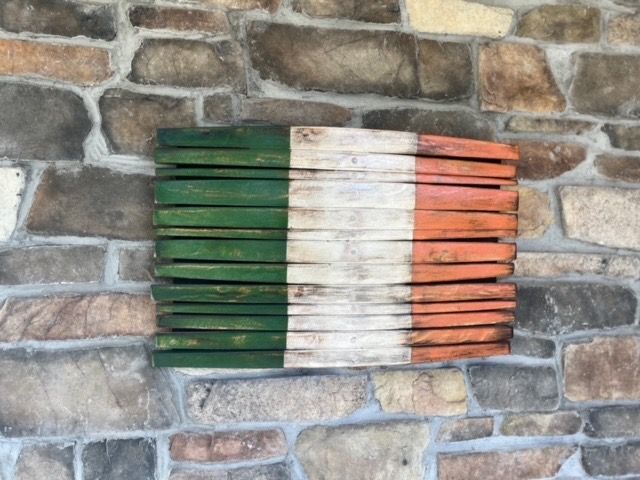Between the Lines / By Peter McDermott
The New Orleans Connection / Part II
NEW ORLEANS -- Perhaps the oddest article in the Times-Picayune during the assassination anniversary week was about the recent walking tour of New Orleans given by 69-year-old Judyth Vary Baker, and hosted by the city’s Strange True Tours. Well, strange, yes – not so sure about true. In her book “Me & Lee: How I Came to Know, Love and Lose Lee Harvey Oswald,” Baker has written about her alleged affair with the assassin when she was 19.
“Oswald’s wife a ruse, woman says” ran the Times-Picayune’s subhead, a reference to Marina Oswald who bore him two children and later remarried and still lives in the heart of Texas. Baker was quoted in the Times-Picayune saying that the “real Lee Oswald was a very brave man who had been a spy (who) went to the USSR for almost three years.”
Marguerite Oswald, his mother, said the same thing: her boy was in the pay of the U.S. government.
Now if I were a secret agent I’d be at great pains to ensure my mother and my girlfriend didn’t know, particularly my mother (“my son, the spy!”).
Some of the better-known conspiracy theories come up short when you know a little bit of history. Take LBJ. You’ll learn early in Robert Caro’s four-volume (and counting) biography that, since childhood, the 36th president was someone known to be adverse to any kind of physical danger or risk. In plain man’s language, he was a coward. So in that light, the idea that he would be party to a plan that had assassins firing in his general direction seems ludicrous.
Alas, what began as a cottage industry in the mid-1960s has grown into the Conspiracy Industrial Complex. The result is the truth has gotten lost even on the most basic levels.
The Irish-based author Anthony Summers long ago suggested that Oliver Stone’s “JFK,” with its distortions and flights into fantasy, would in time undermine the more intelligent questioning of the official verdict. It’s certainly true that the “government did it” line seems to assume a lot of plotters involved. And that’s why nowadays people say, not unreasonably, that some incontrovertible piece of evidence or testimony should have shown up by now.
Summers’s work has overlapped with Stone’s in some respects. They both made much of 544 Camp St, which the former called “the address that did not fit.”
Apparently, Oswald had “544 Camp St.” stamped on some of the pamphlets he handed out four blocks away at Canal Street. The address also housed some anti-Castro organizations and was part of the same building containing 531 Lafayette St., which is where private investigator Guy Bannister was based. Bannister, an ex-FBI agent in good standing, had far-right views and was heavily involved with the anti-Castro scene in New Orleans.
Summers tracked down his secretary, Delphine Roberts, who in a somewhat distressed state, admitted that her late boss (he died in 1964) knew Oswald. The House assassinations committee in the 1970s didn’t know quite what to make of Roberts’s contradictory stories and didn’t include her testimony its final report, but the former BBC journalist made a good case for her.
Generally, his work “Conspiracy” (now “Not in Your Lifetime”) is considered very strong on the New Orleans angle. He concentrated on possible “rogue elements” inside government agencies as conspirators, in league with others. That scenario is rather more plausible, in the context of an administration shift towards a more dovish foreign policy, than something akin to a military plot.
It couldn’t be dismissed so easily. When JFK advisor Arthur Schlesinger Jr., who admired Summers’s book, was quizzed once about whether he believed Oswald might have had help, he said he was “agnostic” on the issue. Is any other position really possible, when we know how easy it is, or was then, for people to disappear into the shadows?
A high percentage of politically-motivated acts of violence remain unsolved – among them the 1986 murder of Swedish Prime Minister Olof Palme, the only other leader of a Western democracy since World War II to be shot dead in public. As important a terrorism incident as the bombing at Piazza Fontana in Milan, which killed 17 people on Dec. 12, 1969 and ushered in a dozen years of bloodshed in Italy, remains shrouded in mystery.
Meanwhile, here in the U.S. the “grassy knoll” has become a punch-line, even though cops ran up that hill with guns drawn. It was mentioned in all of the earliest broadcasts from the scene. Two men in JFK’s inner circle with military experience from World War II, Dave Powers and Kenny O’Donnell, were convinced that gunfire came from that direction. They went to their graves believing the president had been killed as a result of a conspiracy.
Said Josiah “Tink” Thompson in Errol Morris’s New York Times Op-Doc video referred to last week: “There is and only ever has been, it seems to me, one threshold question -- it’s the only question from the very beginning: was anyone shooting from up there? From the ‘knoll’ area.”
Thompson continued: “If that can’t be known – I’m not talking about believed or believed with a fair degree of probability but pretty much known – then this case is going to go into the history the way it is now, which is a real mess.”










